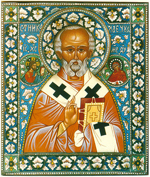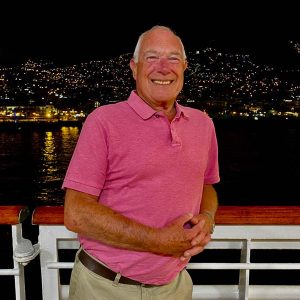We are at that time of the year when children of a certain age have their faith severely tested. I don't mean their religious faith, but their belief in the existence of Santa Claus.
Remember when your own children reached that age of doubt? Though it may seem like only yesterday, they're probably going through the same process with your grandchildren. If it's not too late, you must remember that it is the duty of responsible grandparents to help keep the magic going.
 We resorted to all sorts of deceptions to keep the belief alive in our three children. And we did so because Christmas loses something of its wonder when nobody in the house retains that magnificent innocence, involving as it does the suspension of the basic rules which govern time and space, and the indisputable fact that reindeer can fly.
We resorted to all sorts of deceptions to keep the belief alive in our three children. And we did so because Christmas loses something of its wonder when nobody in the house retains that magnificent innocence, involving as it does the suspension of the basic rules which govern time and space, and the indisputable fact that reindeer can fly.
Incidentally, I realise that this article has nothing whatsoever to do with travel (well, not so far, though you never can tell what might be in store) but I hope you will bear with me, in the spirit of the season.
Back in 1897 a worried eight year old New York child named Virginia O'Hanlon was going through this phase of doubt, mainly because older school friends were voicing their disbelief. So, on the advice of her father, she wrote a letter to the Editor of the Sun newspaper – the city's most influential broadsheet.
The result was an editorial column that has become the most widely quoted in the history of American publishing. "Yes, Virginia, There Is a Santa Claus" was its title.
If you type that phrase into your search engine you'll be able to read the whole thing. You will probably end up with a tear in your eye, but I can thoroughly recommend it. It might help to convince any young waverers in your family, if read aloud.
Many years ago, when I was the Travel Correspondent of The Times – the first they had ever employed – I tended to take myself rather seriously, wearing suits with waistcoats, and sincere ties. Thankfully the phase did not last long, and I was helped out of it at the tail end of one year when I wrote about the "real " Santa Claus.
Frankly, I did so because I couldn't think of anything else to fill the page on that Saturday in December, but it resulted in a heavy postbag (no e-mails or Facebook or Twitter back then, thank goodness), all of which was very favourable.
 All I had done was write about a recent trip to Turkey and how I had visited a small town named Demre. In ancient times it was known as Myra, and in the fourth century A.D. its bishop had been a Greek named Nicholas.
All I had done was write about a recent trip to Turkey and how I had visited a small town named Demre. In ancient times it was known as Myra, and in the fourth century A.D. its bishop had been a Greek named Nicholas.
One of the many legends about him was that he walked the streets at night, throwing small bags of gold into the courtyards of houses whose occupants needed help. One story has him doing this for a man whose three beautiful daughters were destined for a life of sadness and shame, not to mention degradation, because he had no money for their dowries.
In time the bishop became Saint Nicholas and, also in time, Saint Nicholas became corrupted to "Santa Claus". I visited the ruins of his ancient church in Demre, and also the place where his body used to lie. He died on December 6th, 343 and remained in his tomb until 1087 when a gang of sailors stole his remains – or, rather, most of them – and smuggled them to Bari in the south of Italy.
I was in Bari for the first time last year, and went to the crypt of the cathedral where his ornate tomb attracts thousands of pilgrims. At the time of my visit a group of Russians were praying loudly and heartily (among other things, he is the patron saint of Russia).
Incidentally, the bits of Nicholas that the sailors left behind were eventually moved to a shrine in Venice. A few years ago, DNA tests confirmed that the bones in both locations were of the same man. And the Turks asked if they could have both sets back. With no success.
So, if you are drawn into the great debate about whether or not Santa Claus exists, you can in all honesty say that, as Saint Nicholas, he most certainly did.
And it is no great leap of logic to take your cue from that New York Sun editorial I mentioned, and point out that, as long as there is kindness and generosity in this world, not to mention the innocent wonder that is childhood, he will continue to do so.











